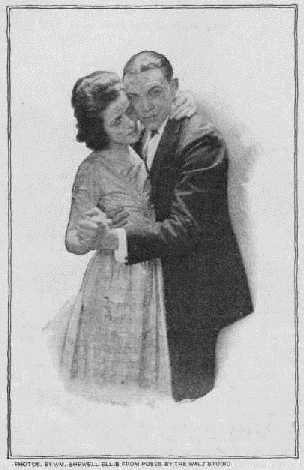The Elements of Music Out of Tune
 Jazz is not defined in the dictionary or encyclopedia. But Groves' Dictionary of Music says that "ragtime is a modern term of American origin, signifying in the first instance broken rhythm and melody, especially a sort of continuous syncopation." The Encyclopedia Britannica sums up syncopation as "the rhythmic method of tying two beats of the same note into one tone in such a way as to displace the accent." Syncopation, this curious rhythmic accent on the short beat, is found in its most highly developed forms in the music of the folk who have been held for years in political subjection. It is, therefore, an expression in music of the desire for that freedom which has been denied to its interpreter. It is found in its most intense forms among the folk of all the Slavic countries, especially in certain districts of Poland and Russia, and also among the Hungarian gypsies.
Jazz is not defined in the dictionary or encyclopedia. But Groves' Dictionary of Music says that "ragtime is a modern term of American origin, signifying in the first instance broken rhythm and melody, especially a sort of continuous syncopation." The Encyclopedia Britannica sums up syncopation as "the rhythmic method of tying two beats of the same note into one tone in such a way as to displace the accent." Syncopation, this curious rhythmic accent on the short beat, is found in its most highly developed forms in the music of the folk who have been held for years in political subjection. It is, therefore, an expression in music of the desire for that freedom which has been denied to its interpreter. It is found in its most intense forms among the folk of all the Slavic countries, especially in certain districts of Poland and Russia, and also among the Hungarian gypsies.For the same reason it was the natural expression of the American Negroes and was used by them as the accompaniment for their bizarre dances and cakewalks. Negro ragtime, it must be frankly acknowledged, is one of the most important and distinctively characteristic American expressions to be found in our native music. Whether ragtime will be the cornerstone of the American School of Music may be a subject for discussion; but the fact remains that many of the greatest compositions by past and present American composers have been influenced by ragtime. Like all other phases of syncopation, ragtime quickens the pulse, it excites, it stimulates; but it does not destroy.
What of jazz? It is hard to define jazz, because it is neither a definite form nor a type of rhythm; it is rather a method employed by the interpreter in playing the dance or song. Familiar hymn tunes can be jazzed until their original melodies are hardly recognizable. Jazz does for harmony what the accented syncopation of ragtime does for rhythm. In ragtime the rhythm is thrown out of joint, as it were, thus distorting the melody; in jazz exactly the same thing is done to the harmony. The melodic line is disjointed and disconnected by the accenting of the partial instead of the simple tone, and the same effect is produced on the melody and harmony which is noticed in syncopated rhythm. The combination of syncopation and the use of these inharmonic partial tones produces a strange, weird effect, which has been designated "jazz."
The jazz orchestra uses only those instruments which can produce partial, inharmonic tones more readily than simple tones--such as the saxophone, the clarinet and the trombone, which share honors with the percussion instruments that accent syncopated rhythm. The combination of the syncopated rhythm, accentuated by the constant use of the partial tones sounding off-pitch, has put syncopation too off-key. Thus the three simple elements of music--rhythm, melody and harmony--have been put out of tune with each other.